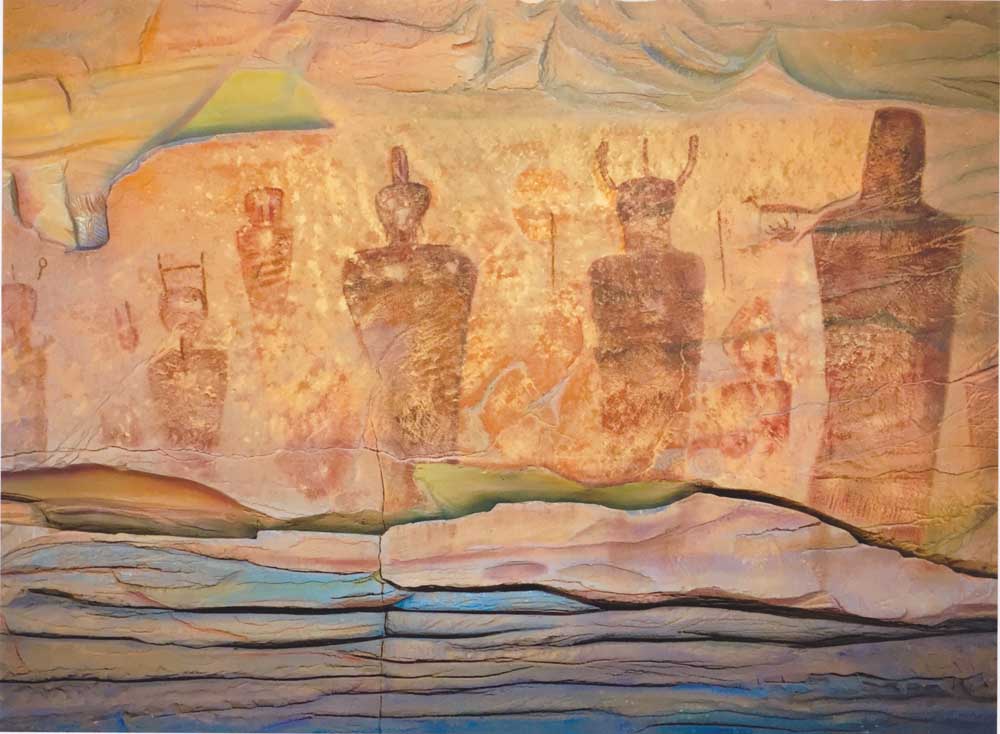Q&A with fine artist Randal Leigh
Published 12:00 am Thursday, June 14, 2018

- Submitted photo
Who: Randal Fyfe Leigh is the Central Oregon artist behind the “Parietal Art and Petroglyph Homage,” on display through July at Franklin Crossing in Downtown Bend (in the first-floor wing closest to Franklin Avenue). In his textured, rich and colorful suite of acrylics on 3D panels, Leigh expresses his reverence for his “ancient artistic colleagues,” as he calls the creators of some of the earliest evidence of human creativity. Leigh spent decades creating paintings, backdrops, murals, props and more for theater, opera and TV, including “The Carol Burnett Show,” “All in the Family,” “Les Miserables” and “Seabiscuit.” He now focuses his time and attention on his personal artwork and commissions.
Q: How did you get involved in working in Hollywood?
A: I was getting ready for an art show … and I had six or eight pieces, and they wanted like 20 to 25, because they wanted a backup. One thing led to another and I had a friend who was working at 20th Century Fox so I started painting backdrops.
Q: You worked on some cool stuff. “The Sonny and Cher Show” and “Carol Burnett.”
A: Yeah, but you know … it’s kind of like your own life — when you try to remember things that you did, especially when it’s that consistent and intense, those were just some things that popped into (my) head. There were so many that I can’t remember. Sometimes there were two or three a week in different venues, and on and on. I did country-western shows, worked with the Grand Ole Opry. … I worked up at the Geary Theater in San Francisco. … It starts to pile up. … It’s the same thing as when I spoke to a pediatrician one time — he was about the age I am now — and I said, “So how many children have you delivered.” He sat back in his chair, looked up at the ceiling and he went, “Um, about 78,000.” (laughs) … I’ve actually lost track of the films and things I worked on, but those were some way back in the CBS days.
Q: When you were working in entertainment, were you also pursuing your own fine art on the side?
A: I did, actually, the entire time. It was always like, “Hey Randal, can I get a Rubens?” I started calling myself Randal the Forger: “God, my wife would really like to have a Monet, but we can’t afford it.” … I’m like, “You think? I can’t afford one either.” So I did a lot of that, and I did a lot of my own thing and sold them. Again, sometimes I come across one of my pieces in someone’s home or I see it online, and I know that I’ve done them, but I also don’t remember exactly doing them. It’s bizarre in that kind of a way.
Q: How long have you been doing these petroglyphs?
A: This is something I’ve wanted to do at least over a couple of decades, and I never could get to it because I kept getting all these other pieces for people. It’s like … when we go off to a hike, even if it’s an unhuman-touched rock wall, sometimes what nature has done is just so incredible. You can’t take it with you, and a photograph doesn’t do the same thing. I think … there’s this feeling you want to ingest nature in moments. You really want to absorb it or make it part of you, because essentially it IS part of us. … You get the choice: You can stand out there until the sun goes down, and you have run back to your car before it gets dark, or you try to take a little tiny photograph. … But then when you’re standing there looking at these ancient pieces, you think, someone had to stand out there in that complete stillness and wind, and do this day after day, if not week after week, until they fulfilled whatever that reason was to do it. … You can imagine if you were in a small band of hunter-gatherers, there had to be a pretty good reason for you to break away from a small unit and spend your time doing that without incurring the wrath of the tribe, or you were doing it at the behest of the tribe, or — the ors can go on and on. The one thing I learned about standing there doing these things, you start to realize there’s no way of cheating. … And you don’t have the benefit of nature having done the wall for you. There’s the tuning in on the geologic time. It’s an impressive thing to go through, at least for me at this stage. … It kind of reminds you of those really deep levels of stillness and distance. Think of the time it took geology to make these things, and then as artists they walk by going, “Oh look what I can see in the rock.”
— David Jasper, The Bulletin






